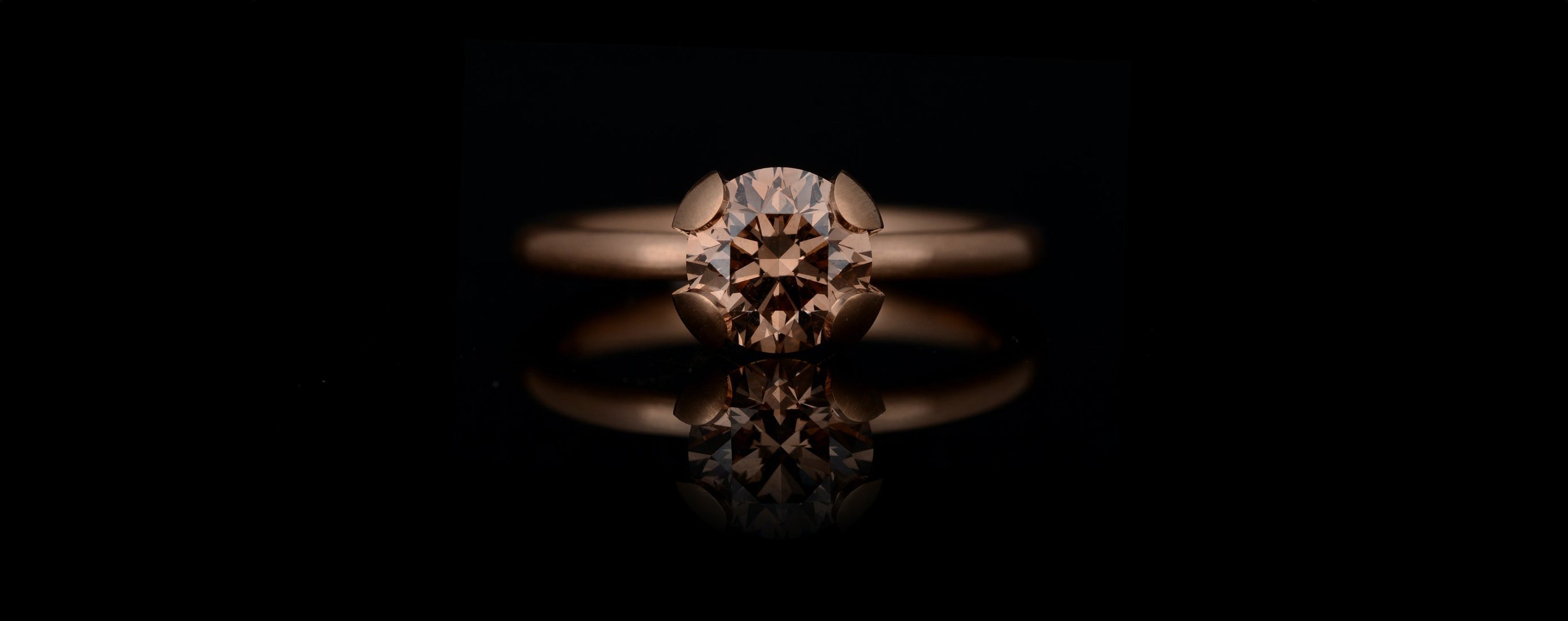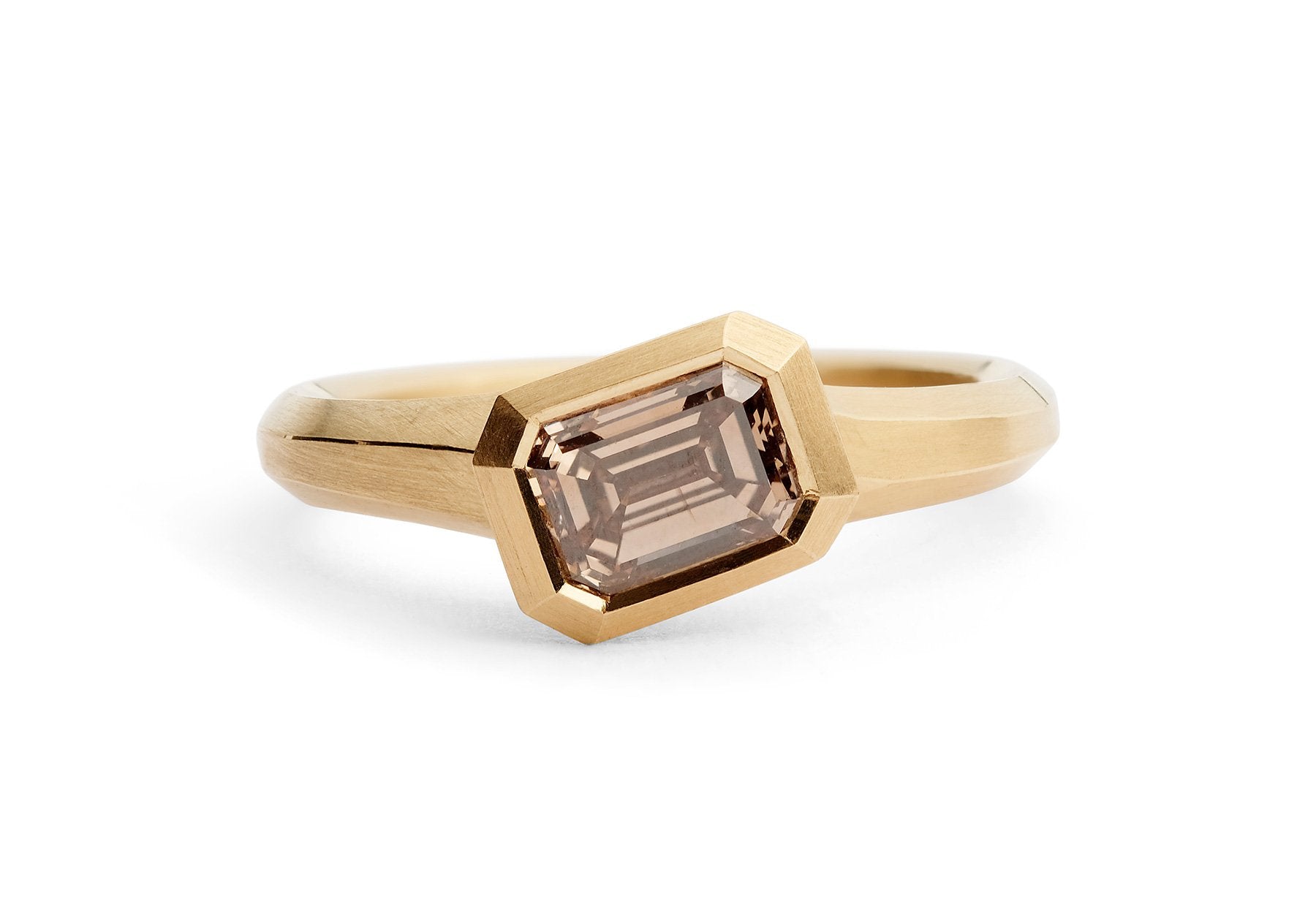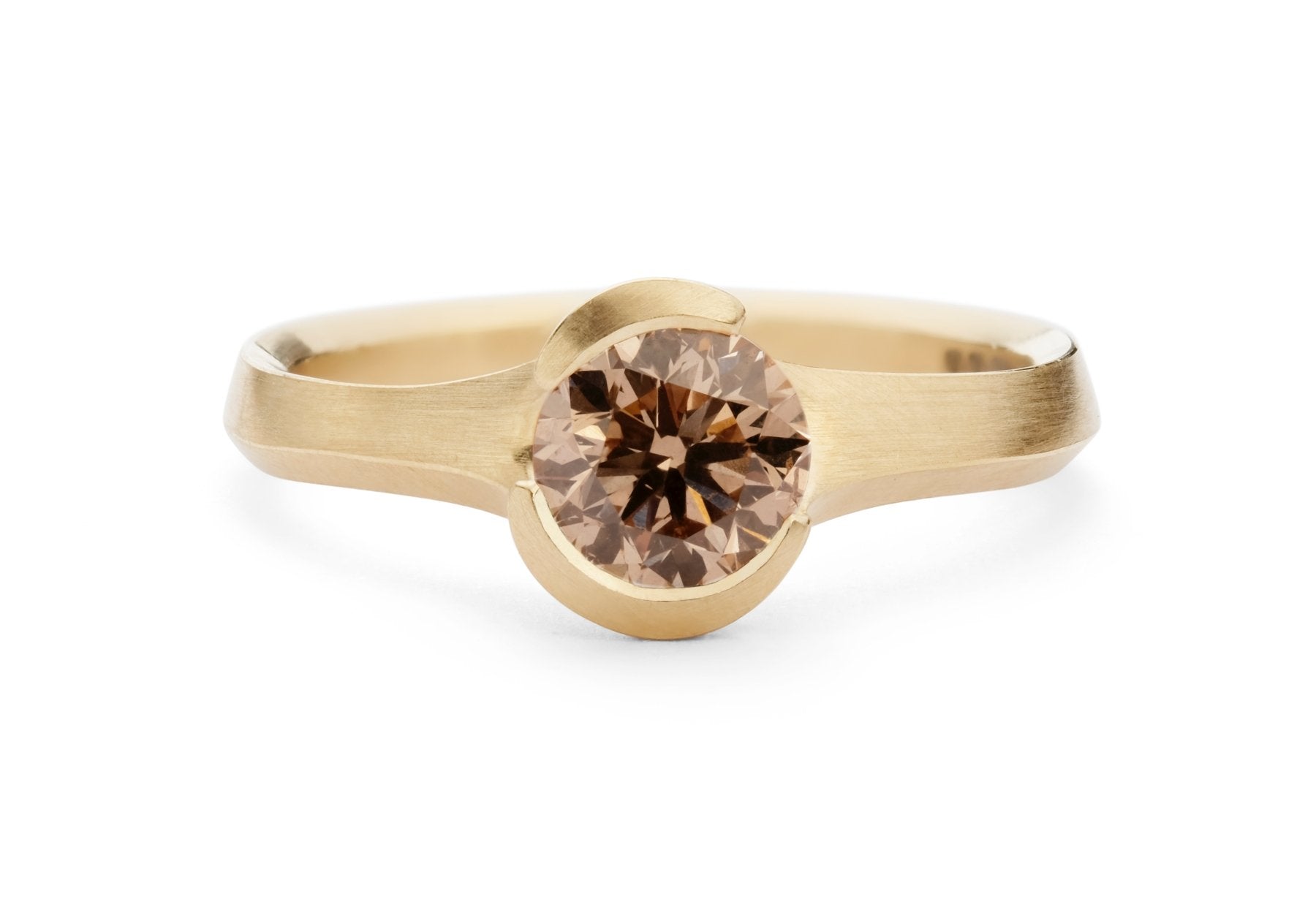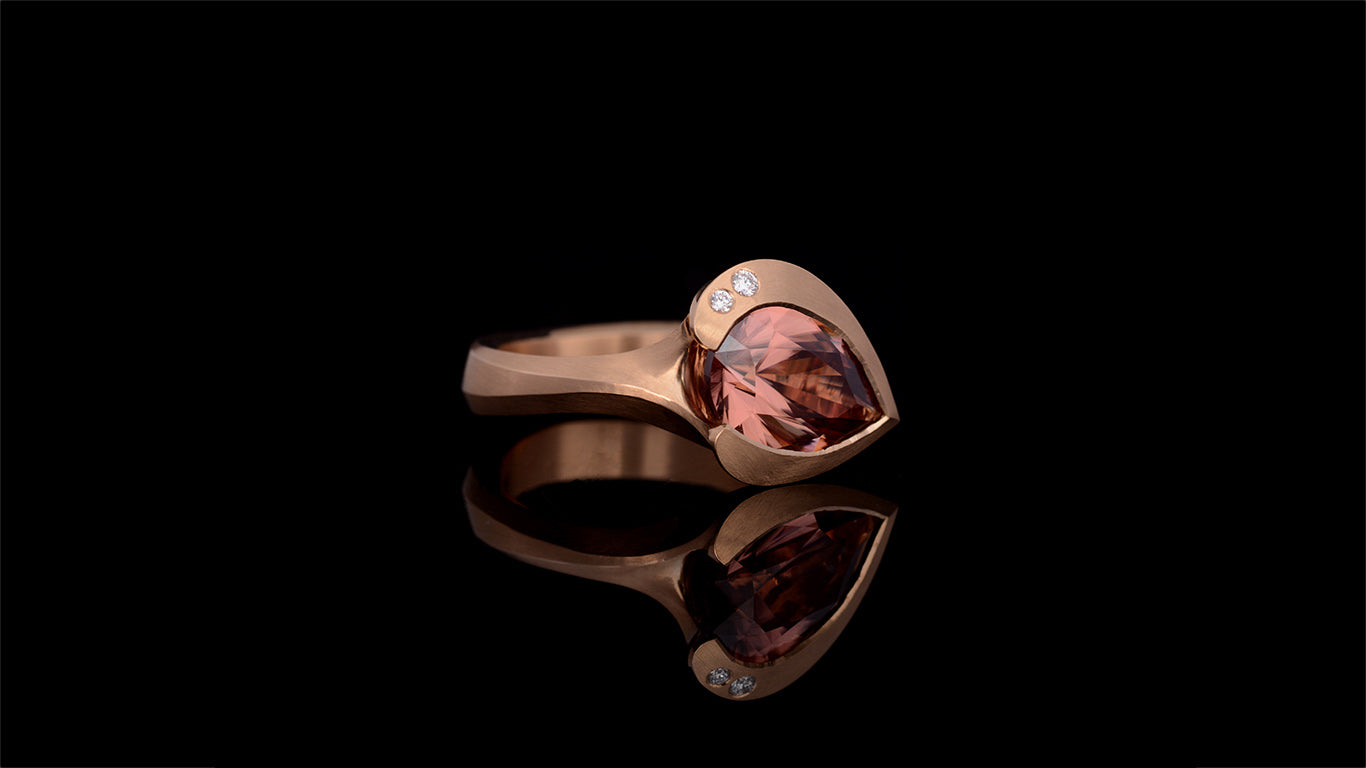
What are champagne and cognac diamonds and why should you choose one?
You have likely heard of champagne and cognac diamonds, but what are they, what gives them their colour and why would you choose them over a white diamond?
'Champagne' and 'cognac' refer to brown diamonds with a shade of colour comparable to their namesake. Champagne diamonds are very pale with a hint of brown or yellow. Cognac is the term given to darker shades and their tones can range in intensity. These naturally occurring coloured diamonds are termed ‘fancy coloured’, a group which also includes yellow, blue, green, pink, orange and grey diamonds to name a few. They have all the qualities that diamonds are prized for – durability and brilliance – as well as individual character given by the subtleties of their colour. They also have the advantage of being less rare than white diamonds or the rare hues of coloured diamonds, so represent excellent value for money.
What gives champagne and cognac diamonds their colour? There are several ways that this can occur, these include nitrogen impurities within the stone, irradiation treatment and most commonly, defects in the crystal’s lattice structure. These defects in the lattice structure change the way light is refracted within the stone, thus changing its appearance. A technique has been developed to heal these structural defects using heat treatment, this can transform brown diamonds into paler yellow or even white diamonds.
Australia’s Argyle mine is the world’s largest supplier of champagne and cognac diamonds. They are also mined in Africa and Siberia. The largest brown diamond ever found is the 'Incomparable Diamond', which was found by a young girl playing in a pile of rubble near the MIBA Diamond Mine in Congo (then Zaire). The cut stone weighs a whopping 407.48 carats and is internally flawless.
The widespread use of champagne and cognac diamonds in jewellery is relatively recent. Until the opening of the Argyle mine in Australia in 1986 brown diamonds were not commonly used in jewellery. Instead, most were used for industrial purposes. The Argyle mine quickly became one of the world's largest suppliers of diamonds (around 1/3 of global production) and 80% of its diamonds are brown. In the 1950s a diamond cutter and jewellery importer introduced the terms champagne and cognac (among others: amber, chocolate, clove, coffee, caramel, cinnamon, tobacco) to improve the desirability of brown diamonds. Over time this has been simplified and ‘champagne’ and ‘cognac’ are the terms most widely used.
Given their beauty, it is hard to imagine that champagne and cognac diamonds could ever have been relegated to industrial use. These very special stones have the characteristic brilliance of diamonds with individual character given by subtle differences in hue. We adore them and use them extensively throughout our collection and commissions. Champagne and cognac diamonds are perfectly complimented by the warmth of yellow or rose gold. A subtle tone on tone effect that is perfect for a more individual engagement ring.
Champagne and Cognac diamonds also have the added appeal of being more affordable than white diamonds. As they are less rare than white diamonds, or the more expensive fancy coloured diamond colours, champagne and cognac diamonds offer excellent value for money.
So, considering all of this, how do you source a champagne or cognac diamond for an engagement ring? As with all diamonds, consider the four 'c's (cut, colour, clarity and carat) when choosing a champagne or cognac diamond. These are the determining factors in a diamond’s value, regardless of the colour. But above all, we recommend that you choose the diamond that appeals to you the most. Trust your own judgement over the diamond's statistics. After all, beauty is in the eye of the beholder.
There are many reasons to choose a champagne or cognac diamond for your engagement ring. Champagne and cognac diamonds are more individual in character, with subtle variances in shade and tone that make them incredibly special stones. It is rare to find two that are exactly alike. They have the qualities that make diamonds so highly sought after - brilliant sparkle and durability – yet are relatively affordability. Their warm hues pair beautifully with yellow or rose gold and offer subtle alternative to a white diamond. As you can see, we are huge fans! To find out more about our champagne and cognac diamond engagement rings please get in touch for a chat.





